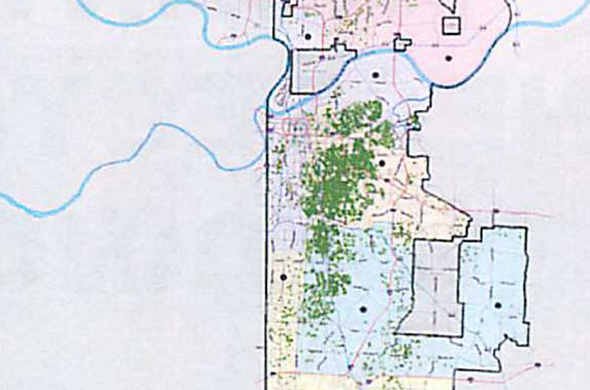There are about 6,000 vacant and neglected properties in the city, officials said Thursday, and city programs save only about 150 of them a year.
And more homes will make the abandoned list because the empty houses prompt others to leave.
“The more you have, the more you get,” David Park, deputy director of the Neighborhood and Community Services Department told the city council.
Given the 6,000, Councilman Michael Brooks asked, “How long will it take us to get to where we need to be?”
Mayor Sly James said, “We’ll be finished with all the houses about the time we repave all the roads.”
But Park said the situation has improved some from last year and there is hope.
“We don’t have to do it all,” he said, “We have to do enough so the private market is stimulated – if we can do enough we can just get out of the way.”
But so far banks are still hesitant to lend for renovations and purchase of inner city homes, officials said.
Still, the market is picking up and people are buying homes and vacant lots if the price is right, said Park, who is also executive director of the Land Bank.
The new city receivership program has had some success. Since it started in September of last year, it has identified more than 200 properties – most of them in Midtown – that are eligible for it.
The program allows the city to send 60-day warning letters to owners to fix problems or the city will file in circuit court to take the property. Then a judge can assign it to private receivers to renovate it and sell it.
As with a somewhat similar program done through Legal Aid, most owners fix property or sell it before a court ruling.
Eddie Tapper is a partner in receiver Providence Partnership LLC, which has completed one rehab and is involved in others. He told the council that more could be done. Providence has set aside $2 million to do receiver work but so far has only been assigned four houses, he said.
“It would be good if there were 50 receivers, each with $2 million,” he said. “Then we will be able to see some real progress.”
Councilman Jim Glover said the city needs to speed up its processes to bring the houses back, put people in them and collect more in taxes and economic benefits.
“The budget of the city suffers because we don’t invest in the urban core,” he said.
Councilwoman Cindy Circo said the private sector needs to do more. Banks so far have refused to contribute money for a proposed fund that would include some city money and be used to make investments in the houses more viable.
“There does need to be a flow of cash on the private sector side,” she said, “a pool of money that serves the capacity to do what we need to do.”
The demand is there for the houses, Glover said. “There is a market for these vacant houses, people want to use them, people want to live in them.”
It will be too late for some houses, with about 1,200 buildings on the demolition list.
The city appropriated $1.7 million for demolition, enough to do only 212 buildings this fiscal year and meanwhile more houses will be added to that list.
“We’ll make little or no progress, or worse, the number will be a little higher in May 2014,” Park said.
Previous Posts




Who’s talking